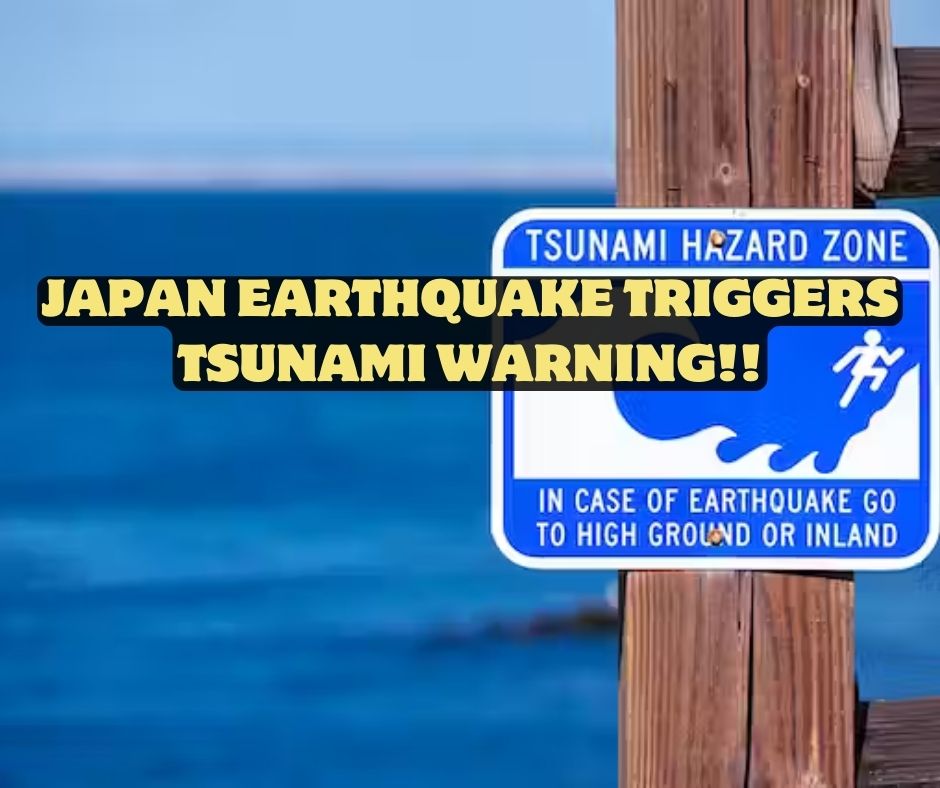Table of Contents
Japan Earthquake Triggers Tsunami Warning
Japan, a country familiar with seismic activities, faced another significant challenge on January 1 as a powerful earthquake measuring 7.6 on the Richter scale struck central Japan. The Japan Meteorological Agency issued a tsunami warning for Ishikawa, Toyama, and the entire western coast, heightening concerns across the nation. This article aims to unravel the intricacies of tsunamis, shed light on the recent events, and explain why Japan is prone to such natural disasters.
Japan Earthqauke: The Unfolding Events
Japan Earthquake Triggers Tsunami Warning: The Japan Meteorological Agency reported a series of 21 earthquakes, registering 4.0 magnitude or stronger, within a span of just over 90 minutes on January 1. Major highways near the earthquake’s epicenter were closed, emphasizing the urgency of the situation.
What is Tsunami: The ‘Harbor Wave’
The term “tsunami” is of Japanese origin, translating to “harbor wave.” Tsunamis result from seismic activities such as earthquakes or volcanic eruptions beneath the ocean. When an earthquake occurs beneath the ocean, it can cause a sudden movement in the ocean floor, displacing a large volume of water and generating tsunami waves.

Similarly, volcanic eruptions in the ocean can lead to the displacement of water, forming massive waves. NASA explains that significant tsunamis typically initiate in deep oceans, growing in height as they approach shallower waters near the shore.
Understanding Tsunami Dynamics
Tsunami waves can reach staggering heights, sometimes hundreds of feet, and travel at jet-plane speeds over deep waters. However, their velocity diminishes upon reaching shallower waters. Notably, not every earthquake or volcanic eruption results in a tsunami; various factors, including ocean floor topography and the seismic event’s characteristics, contribute to tsunami formation.
In the recent incident, a tsunami of at least 1.2 meters (4 feet) hit Wajima, around 300 km from Tokyo, prompting urgent evacuation warnings. A larger tsunami, approximately 3 meters (10 feet) high, was anticipated to impact Niigata and other western coast prefectures.
Earthquake Impact on Japan and Surrounding Regions
The earthquake’s impact reverberated through Japan, halting bullet train services in central and eastern regions. Tokyo, even at a considerable distance from the epicenter, felt the tremors. Concerns about the safety of Tokyo Electric Power Co’s Kashiwazaki Kariwa nuclear power plant led to scrutiny by Japan’s Nuclear Regulation Authority.
Japan, situated along the ‘Pacific Ring of Fire,’ experiences frequent seismic activities due to the convergence of tectonic plates. This geological reality makes the country highly susceptible to earthquakes, volcanic eruptions, and, subsequently, tsunamis.
The Pacific Ring of Fire: A Geographical Challenge
Japan’s location along the ‘Pacific Ring of Fire’ exposes it to a high level of seismic activity. This horseshoe-shaped zone around the Pacific Ocean witnesses intense tectonic movements, involving plates such as the Pacific Plate, Eurasian Plate, and Indo-Australian Plate. The continuous interactions and collisions between these plates contribute to earthquakes, volcanic eruptions, and tsunamis.
2011 Earthquake and Fukushima Disaster
Japan’s vulnerability to seismic events became painfully evident in 2011 when a 9.0 magnitude earthquake, followed by a devastating tsunami, struck its northeastern coastal communities. The disaster claimed around 18,000 lives and displaced tens of thousands. Moreover, the resulting tsunami caused a nuclear meltdown at the Fukushima power plant, marking one of the most severe nuclear accidents since the 1986 Chernobyl disaster.
Conclusion
As Japan grapples with the aftermath of the recent earthquake and tsunami warnings, it underscores the country’s ongoing battle with natural disasters. The ‘Pacific Ring of Fire’ continues to pose a formidable challenge, necessitating constant vigilance, preparedness, and international cooperation in the face of such calamities. Japanese citizens, resilient in the face of adversity, must remain vigilant and heed evacuation warnings to mitigate the impact of these recurrent threats.
You can also read:
- Mumbai Metro Line 3 Phase 1 Set to Roll in April 2024: Unveiling Connectivity and Progress!
- New Rules to Start from Jan 1: A Comprehensive Guide to Changes Impacting Daily Life!
- AMRIT BHARAT EXPRESS: REVOLUTIONIZING TRAIN TRAVEL IN INDIA WITH PUSH-PULL TECHNOLOGY!
- CHRISTMAS NEW YEAR SPECIAL TRAIN BETWEEN PANVEL AND MADGAON FROM DECEMBER 22!


1 thought on “Japan Earthquake Triggers Tsunami Warning: Understanding the Impact and Why Japan Faces Such Threats!!”